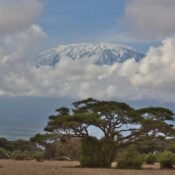
Why Tanzania’s Big Five Safaris Should Top Your Travel Bucket List
Tanzania isn’t just another safari destination—it’s where Africa’s wild heart beats loudest. Home to vast savannahs, ancient migration paths, and wildlife-rich parks, this East African gem is among the few places on Earth where you can witness the legendary Big Five: lion, leopard, elephant, buffalo, and rhinoceros—all in one unforgettable journey. If you’re a traveler yearning for raw, untamed nature and world-class wildlife encounters, a Big Five safari in Tanzania absolutely deserves the top spot on your travel bucket list.
What are the Big Five?
The term “Big Five” originally referred to the most difficult animals to hunt on foot in Africa, but today, it symbolizes the ultimate wildlife viewing experience. These majestic creatures—lion, leopard, elephant, buffalo, and rhinoceros—are iconic not only because of their power and presence but because they embody the wild spirit of Africa.
Tanzania is one of the best places to see all five, not just because they’re there, but because of how immersive the experience is.
1. The Serengeti: The Kingdom of the Lion
No Big Five safari is complete without a visit to the Serengeti National Park. Famous for the Great Migration, where over two million wildebeest, zebra, and gazelle thunder across the plains, the Serengeti is also home to Africa’s highest concentration of lions. Watching a pride of lions lounging beneath an acacia tree or stalking prey at dawn is a moment that lingers long after the trip ends.
Leopards, though more elusive, also roam the rocky kopjes and riverbanks of the Serengeti. Seeing one sprawled across a tree limb, its spotted coat camouflaging perfectly with the dappled sunlight, is a photographic dream.
2. Ngorongoro Crater: The Natural Zoo
A collapsed volcanic caldera, the Ngorongoro Crater is often referred to as a natural zoo. Spanning only about 260 square kilometers, this compact haven packs a punch when it comes to biodiversity. Here, you’re almost guaranteed to see four of the Big Five—lion, elephant, buffalo, and the rare black rhinoceros—in a single game drive.
The crater’s grasslands, freshwater lakes, and swamps create a self-sustaining ecosystem that supports an incredible array of life. Black rhinos, which are critically endangered, are among the highlights. Their sightings are rare across Africa, but Ngorongoro offers one of the best chances to spot them.
3. Tarangire National Park: Elephant Paradise
Tarangire is a lesser-known gem that often surprises visitors with its abundance of wildlife and fewer crowds. It’s particularly renowned for its massive elephant herds—some of the largest in East Africa. Watching these gentle giants march in procession, socializing or cooling off in the Tarangire River, is both humbling and unforgettable.
Buffalo are also common in the park, and their rugged, fearless demeanor often puts them in dramatic encounters with predators. The park’s baobab-dotted landscape adds to the visual spectacle, creating a uniquely Tanzanian safari experience.
4. Lake Manyara: Where Lions Climb Trees
Lake Manyara National Park may be small compared to the Serengeti, but it’s big on uniqueness. This is one of the few places in Africa where lions have adapted to climbing trees—perhaps to escape the tsetse flies or to get a better view of prey.
While the Big Five aren’t all guaranteed here (rhinos are not present), the park still provides an intimate, lush setting for spotting elephants, buffalo, and those famously acrobatic lions. The alkaline lake also draws thousands of flamingos, turning the horizon pink during certain seasons.
5. Nyerere National Park (Formerly Selous): Off-the-Beaten-Path Safari
For travelers who prefer their safari wild and remote, Nyerere National Park in southern Tanzania is an unbeatable option. It’s Africa’s largest game reserve and one of the last strongholds for the endangered African wild dog.
Nyerere is also one of the best places to spot all of the Big Five in a less commercialized setting. Here, safaris aren’t just about game drives—boat safaris on the Rufiji River and walking safaris with expert guides add a different dimension to wildlife viewing, bringing you closer to nature than you thought possible.
Why Tanzania is Perfect for First-Time and Repeat Safari-Goers
Tanzania has a little something for everyone. First-time visitors are wowed by the sheer volume and variety of animals, while seasoned safari-goers appreciate the country’s ecological diversity, cultural depth, and the option to combine luxury with authenticity.
The safari infrastructure is well-developed, offering everything from budget-friendly camps to ultra-luxury lodges. And Tanzanian guides are among the most knowledgeable and passionate in the business, adding layers of insight to every sighting.
Beyond the Wildlife: The People and Culture
While the Big Five draw you in, the warmth of Tanzanian hospitality and its vibrant cultures will make you want to stay. Engaging with local communities, like the Maasai, adds a rich human element to your trip. Many lodges and tours offer cultural visits that are respectful, enlightening, and deeply rewarding.
Conservation Matters
By choosing a responsible safari operator, your trip also supports conservation. Tanzania’s protected areas rely heavily on tourism revenue to fund anti-poaching units, community education, and wildlife preservation. Traveling here not only fulfills a personal dream—it helps secure the future of the Big Five for generations to come.
Final Word
A Big Five safari in Tanzania is more than a vacation; it’s a transformative journey into the wild. Whether you’re witnessing a lion’s roar echo across the plains, tracking rhinos in the misty Ngorongoro Crater, or watching elephants raise dust against a golden sunset—Tanzania promises moments that stay etched in your memory forever.
So, if your travel bucket list still has space for adventure, wonder, and soul-stirring beauty, make room at the very top for Tanzania’s Big Five safari. It’s not just a trip—it’s the story of a lifetime waiting to be lived.




